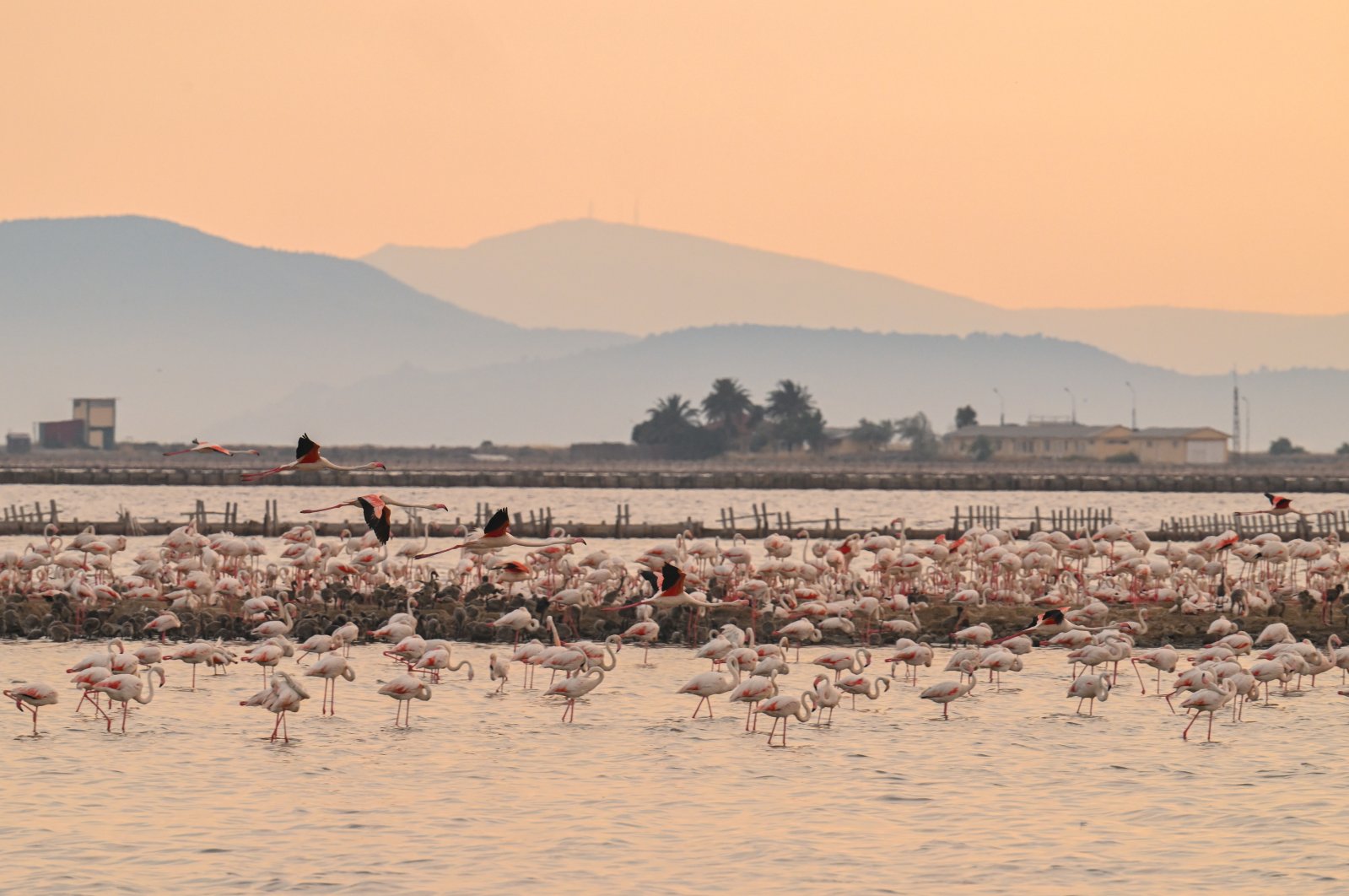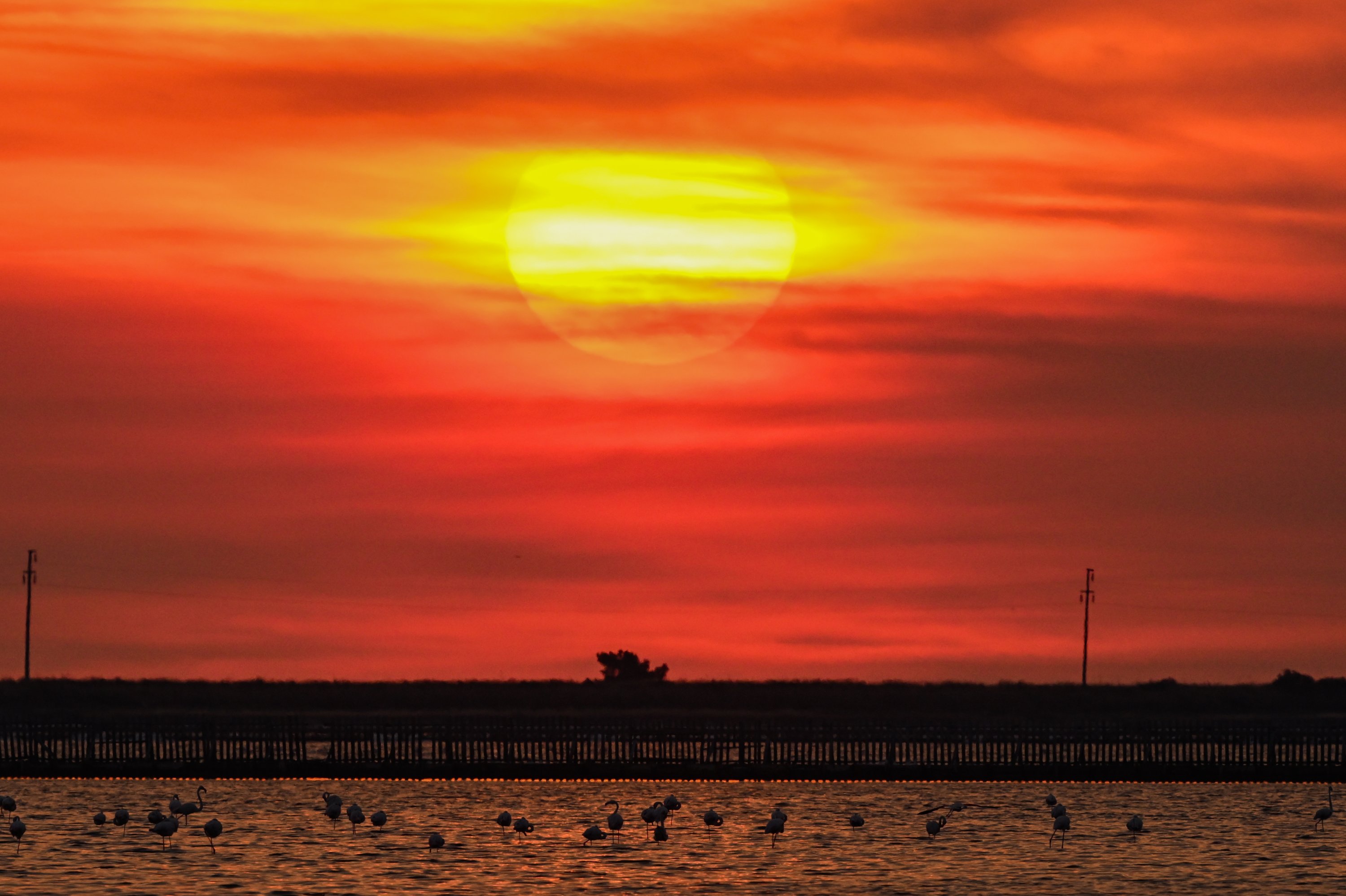
Thousands of baby flamingos have seen the light of day, as the hatching season in the artificial island built for their accommodation in Izmir's Gediz Delta began recently.
A 6.5-decare artificial hatchery island built by the General Directorate of Nature Conservation on National Parks (DKMP) in 2012, also known as "Izmir Bird Paradise," welcomes thousands of baby flamingos every year.
Gediz Delta, a UNESCO World Natural Heritage candidate, a nature reserve that includes Izmir Bird Paradise and salt marshes, is one of the largest wetlands in the Mediterranean and is home to rare bird species as well as an important stop for migratory birds.
Being one of the breeding grounds for flamingos in Türkiye, the region is also home to many waterfowls every season.
However, according to Hakan Özdür, the Izmir branch manager of the 4th Regional Directorate of the DKMP, the flamingo is the predominant breeding bird in the Gediz Delta, and this is primarily attributed to the presence of an artificial island.
Speaking to Anadolu Agency (AA), Özdür said, "The newborn flamingos, emerging in May, are nurtured by their parents in the water adjacent to the island during June and July. By August, they begin their fledgling attempts. This year, we witnessed 16,000 to 18,000 flamingos hatch from eggs and thrive to live on the entire artificial flamingo island."
"We are engaged in rehabilitation work with our team before the breeding season commences, and we protect the flamingos against wild animals with wooden fences erected around the island," he added.
The DKMP provides fresh water especially during arid summer months to protect the wetlands of the delta. Likewise, the artificial islands were created due to the melting of the existing natural hatchery island by wave erosion.
The teams of the Izmir Branch of the 4th Regional Directorate of Nature Conservation and National Parks (DKMP) raked the soil surface to soften it to make it easier for the birds to nest on the artificial island before the breeding season.

To protect eggs from wild animals, teams set up the wooden fence, while it was noted that thousands of little birds hatched on the island. Baby flamingos meet water 20-25 days after hatching.
Subsequently, thousands of birds hatched on the island, and within 20-25 days, they ventured into the water. This collective water area, known as the "nursery," served as a primary habitat for the growing chicks, who occasionally return to the island where they first open their eyes.
After hatching, the baby flamingos, which have black and gray feathers, are fed with "artemia salina," a type of arthropod also known as salt shrimp.
From the third month, they learn to fly and adopt an independent life in natural surroundings.
To safeguard the baby flamingos throughout the hatching process, the "Izmir Bird Sanctuary" implemented special precautions so that they are not disturbed during the period.
Apart from continuous monitoring and surveillance, facilitated by a 24/7 camera system, the birds' activities can also be observed by visitors from the visitor center.
